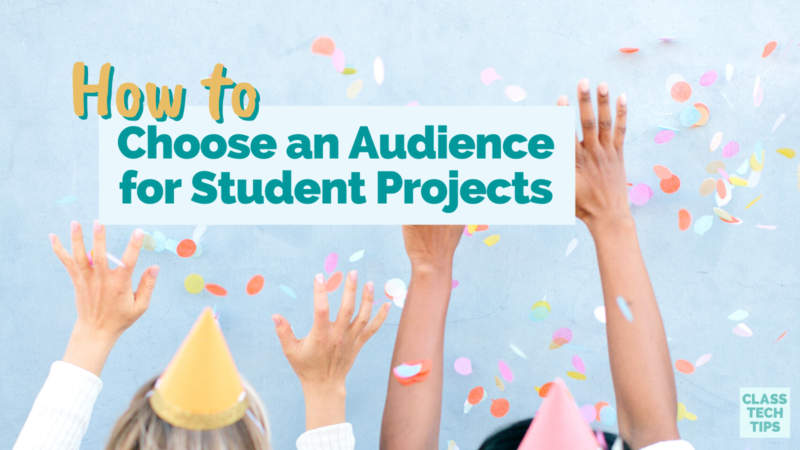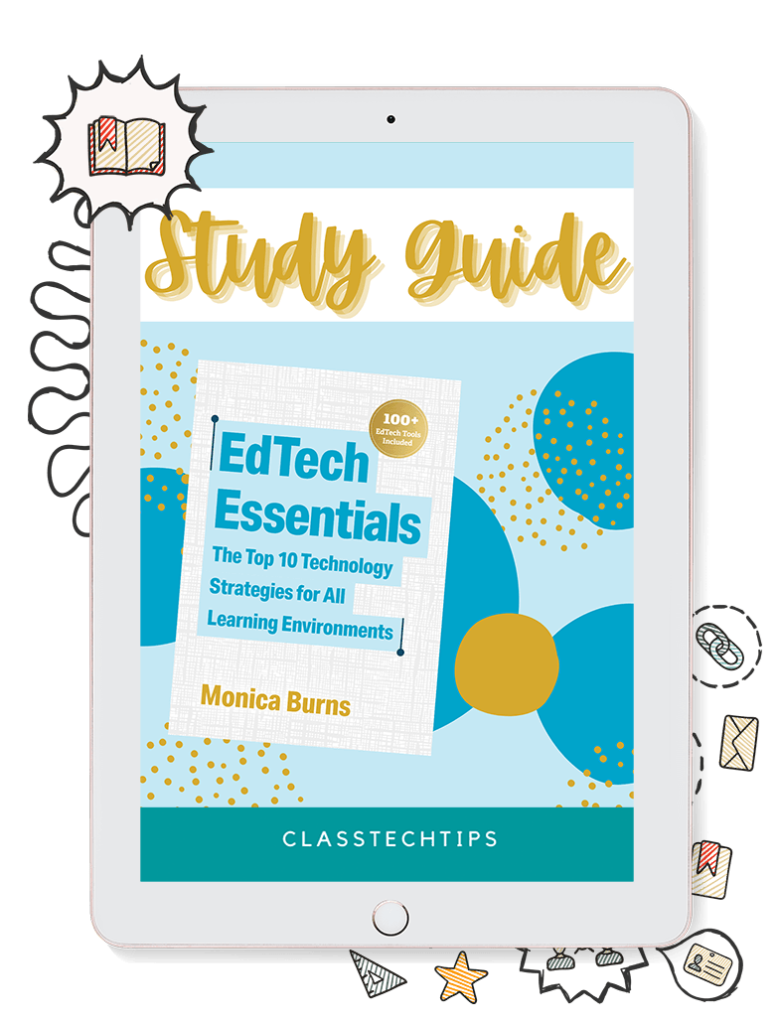We know that audience is such a critical part of the creative process for students. Having an audience sets a purpose and gives a different sense of ownership over the work they create. In today’s blog post, I’m excited to share another Spotlight from my book EdTech Essentials: The Top 10 Technology Strategies for All Learning Environments— and the first spotlight of 2022. This post is all about audience and is inspired by Chapter 8 — “Connect Student Work to a Relevant and Authentic Audience.” It includes tips for how to choose an audience for student projects.
Regular listeners of the Easy EdTech Podcast might remember that I had a few spotlights from my book EdTech Essentials earlier this school year. These were episodes:
- 129 – How to Help Students Better Navigate Digital Spaces [EdTech Essentials Spotlight]
- 132- 5 Tips for Picking the Best Resources for Your Students [EdTech Essentials Spotlight]
- 138 – Exploring the World With Virtual Field Trips [EdTech Essentials Spotlight]
3 Types of Audiences for Student Projects
Below we’re going to look at three types of audiences for student work. These fall into the categories of: entertain, persuade, and inform. I’ll also share an excerpt from the chapter that gives you a sneak peek at the book and a few extra ideas to consider.
This blog post is a modified version of the transcript to an upcoming episode of the Easy EdTech Podcast. It’s a little more conversational than how I normally write. Rather listen than read? Click here to follow the podcast for free and find all current podcast episodes.
Let’s dive into today’s blog post, all about three types of audience for student work!
EdTech Essentials: Choose an Audience
In December, I gave a keynote to about 750 educators in Wisconsin to kick off the SLATE Conference. I spoke about the idea of student creators and I shared a clip from a podcast episode I had listened to — it was an interview with Jeff Kinney, the author of the Diary of a Wimpy Kid series. This episode of the podcast, The Press Box, was all about his origin story and how he became a writer. And when the host asked him about this, Jeff Kinney said: “I always had that decision to make every day, which was should I do this term paper? That will be seen by my one professor. Or should I do my comic? Which will be seen by 30,000 people. And my grades really suffered, but I cut my teeth.”

Now I’m not saying students need to have an audience of 30,000 or 3,000 or even 300 to make their work special. But, no matter how big or small, having an audience is essential and can change the whole conversation for student creators. As we think about audience today, let’s look at three types of audience you might explore. These connect to the purpose of student writing and what students create. There’s a whole chapter that talks about audience but this is just a quick selection.
Examining Three Audience Types
Here’s a quick excerpt from page 82 of my new book for ASCD, EdTech Essentials: The Top 10 Technology Strategies for All Learning. If you already have the book, grab this free study guide.
English language arts teachers are familiar with different types of writing and the purpose of an author who is creating text for someone to read. A reader should be able to identify why an author wrote a particular piece. We commonly refer to this as an author’s purpose. Three core purposes are to persuade, to entertain, or to inform a reader. Although there are variations and nuances to these three overarching categories, understanding them can help in developing learning experiences that ask students to connect to a relevant and authentic audience.
Persuade
Products in the persuade category seek to change or influence the opinion of the viewer, reader, or listener. A public service announcement, an editorial, a commercial, or an advertisement would fall into this category. The audience for this type of student product should be an individual or a group of people who are invested in the issue, are affected by the topic, and are open to changing their mind. So if students create a persuasive piece, their audience should be a group that could actually be persuaded by their argument.
Entertain
A student creation designed to entertain an audience is providing value to a group while students apply skills related to the academic goals for that unit or activity. Such creations might include creative writing projects or multimedia presentations. Students might make a short video where they recreate a notable moment in history, or compose a song inspired by a novel. This type of student product often elicits an emotional response from an audience, such as laughter or tears.
Inform
Student work products designed to inform an audience about a topic may include explanations or tutorials. In digital spaces, students can create infographics, interactive presentations, and summaries of their learning in a variety of contexts. Establishing a clear audience can help guide students during the production process, particularly in choosing a media format appropriate for this specific group. To find exemplars for this type of project, you might share an explainer video from TED-Ed or an article from Newsela.
As you think about student creation this year, I hope the connection to an audience will stay front of mind. You can start with a conversation about the audience as soon as you share a new project with students. This strategy can help establish a purpose for their creative endeavor from the very beginning of their journey. Do you already have a copy of EdTech Essentials: The Top 10 Technology Strategies for All Learning? Then, don’t forget to grab this free study guide.








